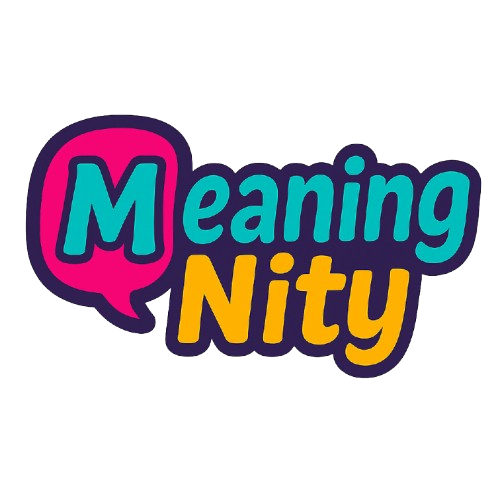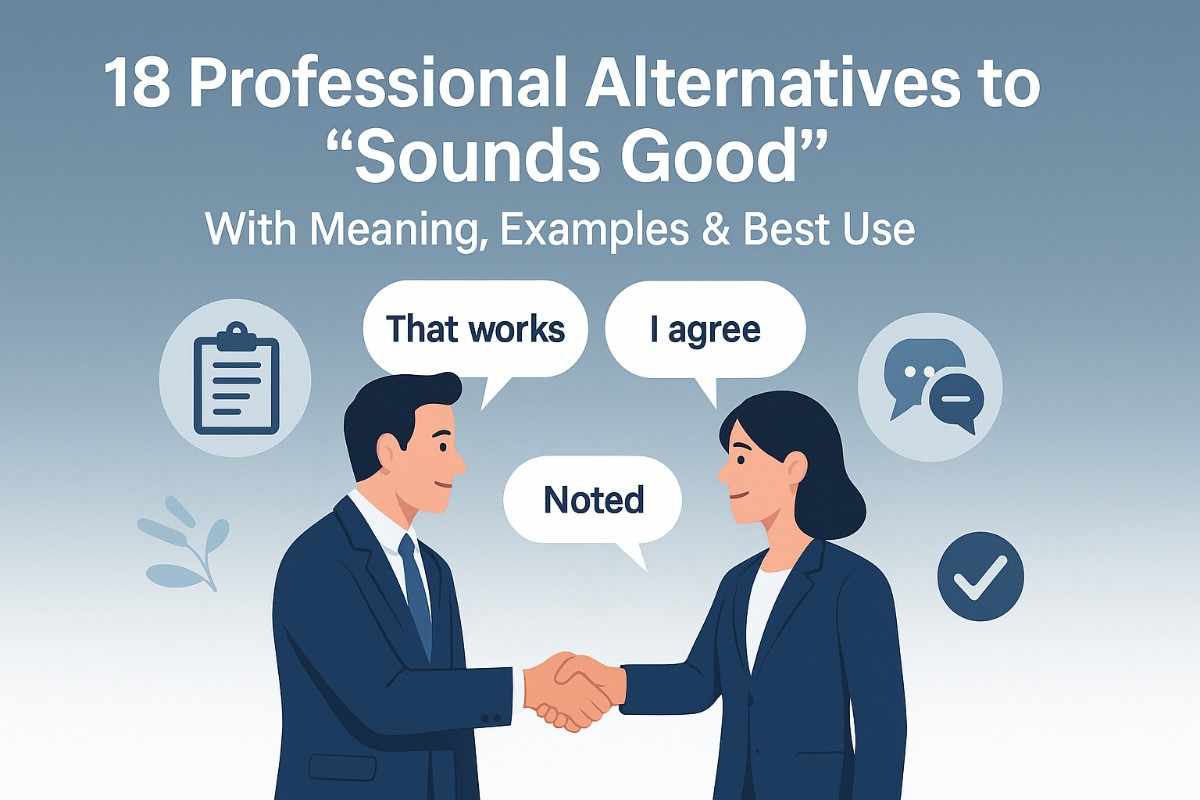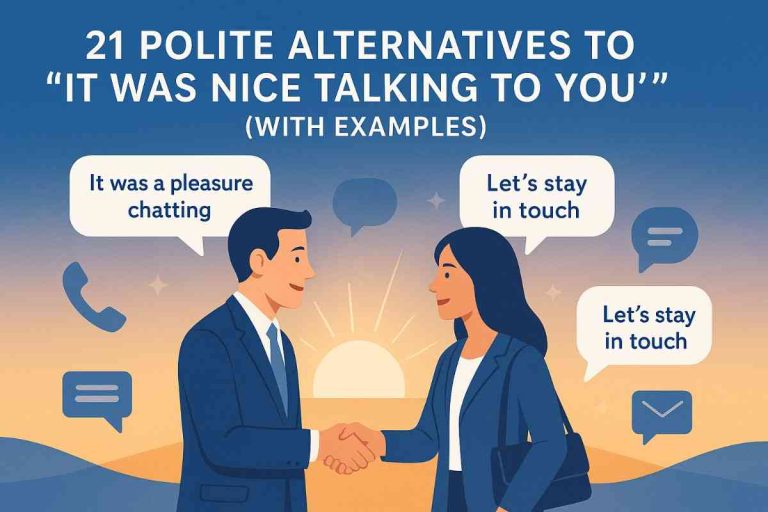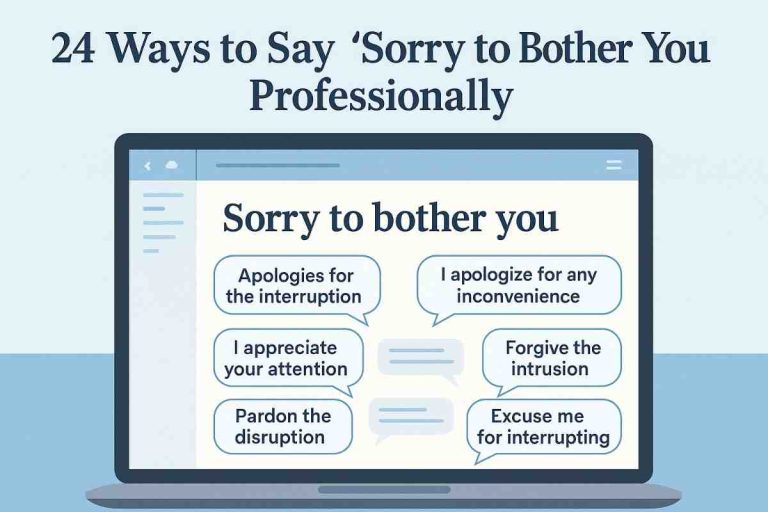18 Alternatives to “Sounds Good” (With Meaning, Examples & Best Use)
Let’s be honest—“sounds good” is everywhere. It’s casual, friendly, and easy to type. But is it always the right fit? Not exactly.
In professional settings, repeating “sounds good” in every reply can make your communication feel stale or even lazy. Worse, it can come off as dismissive or vague when clarity matters. If you’re replying to a client, manager, or teammate, choosing a more specific phrase can actually help you sound thoughtful—and more confident.
So, if you’re ready to upgrade your communication game, this guide offers professional synonyms for “sounds good,” complete with meaning, examples, and best uses.
What Does “Sounds Good” Mean?
At its core, “sounds good” is a casual way of expressing agreement or approval. It tells the other person that you’re okay with the plan, suggestion, or statement they just made. It’s light, easygoing, and works well in personal conversations.
But in the workplace? It can sometimes feel too relaxed.
Quick Example:
Colleague: “Let’s push the deadline to Friday instead of Wednesday.”
You: “Sounds good.”
There’s nothing wrong with that. But it could be better. Maybe a little more precise. Or more professional, depending on your audience.
Where to Use “Sounds Good”
“Sounds good” works best in low-stakes, informal settings—think friendly team chats or casual emails. It fits when there’s already mutual understanding and when you’re simply acknowledging agreement.
That said, avoid using it in situations where:
- A detailed reply is expected.
- You’re dealing with clients or executives.
- Clarity or formality matters.
Here’s the thing: being too casual can sometimes feel like you didn’t read the full message—or worse, like you don’t care.
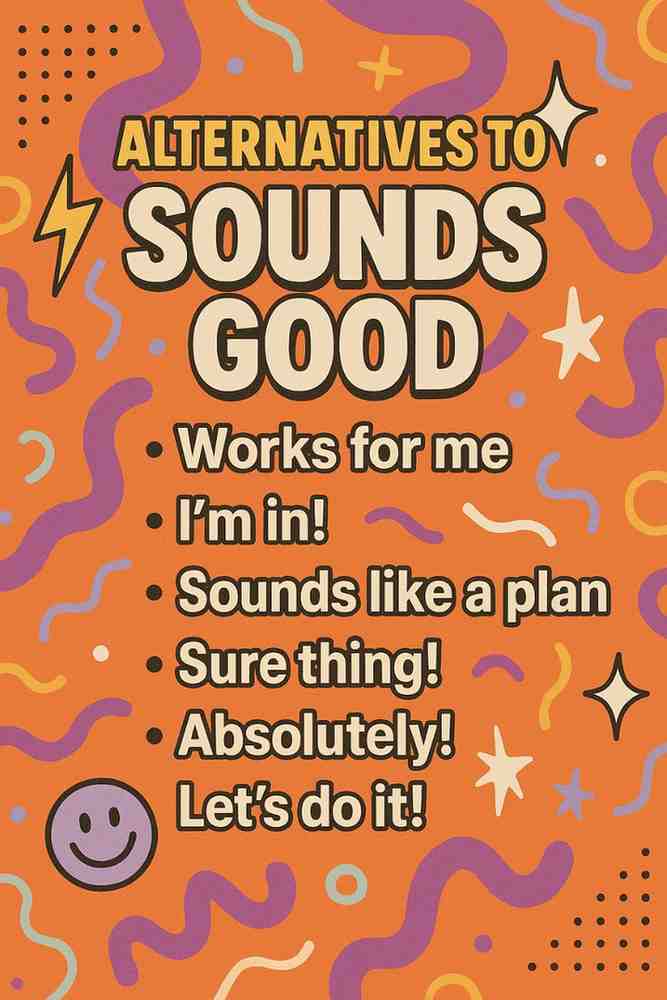
Discover More: 20 Better Ways to Say “It’s My Pleasure to Help You”
18 Professional Alternatives to “Sounds Good”
Let’s break these down into easy-to-use options, so you always have the right phrase ready. Each alternative includes a short meaning, explanation, example, and best use.
1. Agreed
Meaning: You’re on the same page.
Explanation: A short, confident reply showing clear agreement.
Example: “Let’s circle back after the meeting.” → “Agreed.”
Best Use: Email or Slack messages where quick consensus is needed.
2. That Works for Me
Meaning: You’re okay with the plan.
Explanation: Slightly more polite and personal than “sounds good.”
Example: “Can we move our call to 2 PM?” → “That works for me.”
Best Use: Scheduling and logistical replies.
3. I’m On Board
Meaning: You support the idea.
Explanation: Confirms agreement with a touch of enthusiasm.
Example: “Let’s roll out the new feature next week.” → “I’m on board.”
Best Use: When you want to show active involvement.
4. Sounds Like a Plan
Meaning: You approve of the approach.
Explanation: Friendly but slightly more intentional than “sounds good.”
Example: “Let’s handle client feedback before Friday.” → “Sounds like a plan.”
Best Use: Informal team chats or check-ins.
5. Noted
Meaning: You’ve read and acknowledged the message.
Explanation: Clear and brief—no fluff.
Example: “Don’t forget the slides by EOD.” → “Noted.”
Best Use: When no further response is needed.
6. Absolutely
Meaning: Strong agreement.
Explanation: Confirms something with enthusiasm.
Example: “Let’s prioritize this ticket.” → “Absolutely.”
Best Use: Show high confidence or support.
7. Understood
Meaning: You got the message and you’re aligned.
Explanation: Communicates clear comprehension.
Example: “Make sure to tag the analytics team.” → “Understood.”
Best Use: Project tasks and instructions.
8. I Agree
Meaning: You think the same way.
Explanation: Direct and formal.
Example: “We should run tests first.” → “I agree.”
Best Use: Strategic or decision-making discussions.
9. Makes Sense
Meaning: You find the suggestion logical.
Explanation: Useful when responding to reasoning or explanations.
Example: “We’ll delay launch until the fix is done.” → “Makes sense.”
Best Use: Replying to justifications or rationale.
10. Copy That
Meaning: Acknowledged, usually instructions.
Explanation: Slightly informal, sometimes military-inspired.
Example: “Please send it over before noon.” → “Copy that.”
Best Use: Fast-moving teams like sales or ops.
11. Fine by Me
Meaning: You’re okay with the idea.
Explanation: Casual but polite.
Example: “Want to skip the meeting if there are no updates?” → “Fine by me.”
Best Use: Low-stakes decision making.
12. I’m Okay with That
Meaning: You’re agreeing, maybe with slight hesitation.
Explanation: Gentle, non-assertive approval.
Example: “We’ll take the cheaper vendor.” → “I’m okay with that.”
Best Use: Compromise or minor decisions.
13. Let’s Do It
Meaning: You’re ready to move forward.
Explanation: Active and engaging response.
Example: “Want to present the proposal Monday?” → “Let’s do it.”
Best Use: Action-oriented settings.
14. I’m Fine with That
Meaning: You’re in agreement, neutrally.
Explanation: Similar to “fine by me,” but more formal.
Example: “We’ll go with the 3-month contract.” → “I’m fine with that.”
Best Use: Contract or negotiation talks.
15. Confirmed
Meaning: You officially agree.
Explanation: Clear, no ambiguity.
Example: “Let’s go with 2 PM.” → “Confirmed.”
Best Use: Time-sensitive or deadline-based replies.
16. Thanks for the Update
Meaning: You appreciate the message and accept it.
Explanation: Combines politeness with acknowledgement.
Example: “We’ve approved the Q4 budget.” → “Thanks for the update.”
Best Use: Manager or executive communication.
17. I’m Aligned
Meaning: You share the same understanding.
Explanation: Slightly buzzword-y, but useful in team environments.
Example: “Let’s move forward with Option B.” → “I’m aligned.”
Best Use: Strategy or planning discussions.
18. Acknowledged
Meaning: You received the message.
Explanation: Direct, professional, and neutral.
Example: “Server will be down 3–5 AM.” → “Acknowledged.”
Best Use: Technical updates or alerts.
Simple and Polite Responses to “Sounds Good”
Let’s flip the script for a second. What if someone says “sounds good” to you? Should you reply? Do you need to say anything more?
In many cases, a simple emoji 👍 or “Thanks!” works fine—especially in chats. But if the moment calls for more, here are some polite replies to “sounds good”:
- “Great, talk soon!”
- “Perfect, see you then.”
- “Glad we’re on the same page.”
- “Awesome, I’ll take it from here.”
- “Thanks! Looking forward to it.”
Short and sweet is the key. You don’t have to overthink it, just match the tone and keep the conversation moving.
Conclusion
“Sounds good” isn’t going away anytime soon. It’s quick, convenient, and totally acceptable in many situations. But like any phrase, using it too much—especially in professional settings—can dull your communication.
Swapping it out now and then with more precise or polished synonyms gives you an edge. Whether you’re approving a plan, responding to updates, or closing a deal, the way you reply shapes how others perceive you.
So, next time you’re tempted to type “sounds good,” pause for a second. Is there a better fit? Something sharper or more thoughtful? If so—use it. You’ll sound more professional, and people will notice.
And that? Well, that sounds good.
